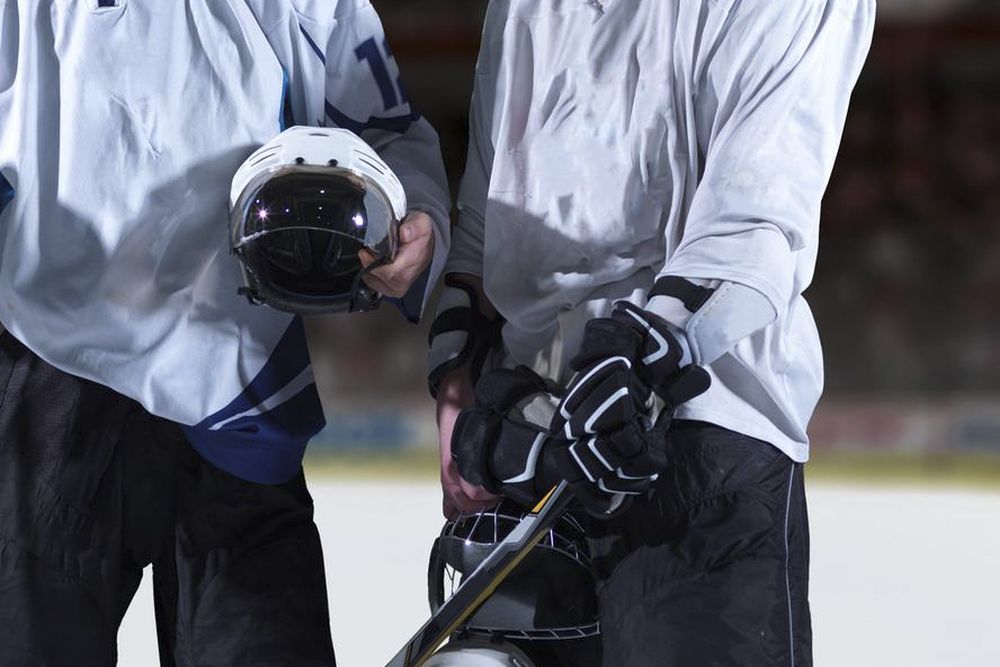When it comes to playing hockey, safety should always be a top priority. One crucial aspect of player safety is the condition of their helmet.
In this article, we will delve into the topic of when to replace your hockey helmet. We will discuss the factors that contribute to helmet expiration, such as visible damage and deterioration of foam and padding. Additionally, we will explore the certification standards that determine the lifespan of helmets.
As concerns about head injuries continue to rise, the NHL has implemented rules to prioritize helmet safety. It is essential for players to have a proper, well-fitting helmet, regardless of expiration dates, to ensure their safety on the ice.
Signs of Expired Certification
Signs of expired certification can indicate the need for a replacement hockey helmet. Checking expiration dates on certification stickers is crucial to ensuring the helmet is still safe and effective. Using an uncertified helmet poses significant risks. These helmets may not meet the necessary safety standards, making them inadequate for protecting against head injuries.
Uncertified helmets can also prevent participation in certain leagues or tournaments that require certified equipment. It is essential to prioritize safety and use a properly certified helmet to minimize the risk of head injuries. Regularly checking the expiration dates on helmet certifications is a simple yet effective way to ensure the helmet remains reliable and provides the necessary protection on the ice.
Visible Damage and Helmet Fit
One indicator that it may be time to replace your hockey helmet is if there is visible damage or if the helmet no longer fits your head firmly. Checking for cracks, dents, and rust on your hockey helmet is crucial to ensure its structural integrity. Any visible damage can compromise the helmet’s ability to protect your head effectively. Additionally, the role of proper helmet fit in protecting against head injuries cannot be overstated. A helmet that is too loose or too tight may not provide adequate protection during collisions or falls. It is important to regularly check the fit of your helmet and make adjustments as needed to ensure optimal safety on the ice.
| Visible Damage | Helmet Fit |
|---|---|
| Checking for cracks, dents, and rust | Ensuring a proper, snug fit |
| Visible damage compromises protection | Loose or tight helmets can be ineffective |
| Regularly inspect your helmet for damage | Adjust fit as needed for optimal safety |
Deterioration of Foam and Padding
As the foam and padding inside a hockey helmet deteriorate over time, it is important to monitor their condition for optimal protection. The deterioration of foam and padding can have a significant impact on the effectiveness of the helmet in absorbing and dispersing impact energy.
Common signs of foam and padding deterioration include visible wear and tear, loss of thickness or density, and a hardened or compressed texture. Advances in foam and padding technology have greatly enhanced helmet safety, with newer materials designed to provide better impact absorption and comfort.
Regular inspection and replacement of helmets are crucial to ensure that the foam and padding are in good condition and able to provide adequate protection. By prioritizing the maintenance and replacement of helmets, players can reduce the risk of head injuries and enjoy a safer playing experience.
Understanding Helmet Certifications
Understanding Helmet Certifications is crucial for ensuring the safety and effectiveness of hockey helmets. Common misconceptions about helmet expiration can lead to improper use and potential risks.
Helmet certifications vary depending on the country, with organizations like the Hockey Equipment Certification Council (HECC) in the United States and the Canadian Standards Association (CSA) in Canada playing significant roles. These certifications determine the safety standards that helmets must meet.
It is important to note that while certifications have expiration dates in the United States, the CSA does not provide specific expiration dates for helmets in Canada. Additionally, European players’ helmets acquire a Conformité Européenne (CE) sticker.
Certification details are typically stated on stickers placed on the back of the helmet, providing important information for players and ensuring they are using helmets that meet the necessary safety standards.
The Importance of Helmet Safety
The importance of helmet safety cannot be overstated, as helmets are crucial for protecting hockey players from collisions, pucks, and sticks.
Concussion prevention is a key aspect of helmet safety, as head injuries can have serious long-term effects.
The NHL has implemented helmet regulations to prioritize player safety, such as requiring players to retrieve lost helmets or immediately return to the bench. This rule emphasizes the significance of wearing a properly fitted helmet at all times during play.
Improvements in helmet technology are constantly being tested and implemented to reduce the risk of concussions.
Regardless of expiration dates, it is essential for players to prioritize safety and ensure they have a helmet that meets the necessary standards for protection.
Frequently Asked Questions
How Often Should I Replace My Hockey Helmet?
When to replace your hockey helmet depends on various factors such as the expiration date, visible damage, fit, and missing or cracked foam. Regularly checking for these signs ensures optimal protection and compliance with safety standards.
Can I Still Use My Helmet if the Certification Sticker Has Expired but There Is No Visible Damage?
Although the certification sticker may have expired and there is no visible damage, it is recommended to replace your hockey helmet. Helmets can become less effective over time, and proper certification ensures optimal safety.
What Are Some Signs of Helmet Deterioration That I Should Look Out For?
Signs of helmet deterioration include expired certification stickers, visible damage, poor fit, missing or cracked foam, and being past the expiration date. Regular helmet maintenance is crucial to ensure its lifespan and continued effectiveness in protecting the head during hockey activities.
Are There Any Specific Safety Standards That Helmets Need to Meet?
Helmet safety standards are crucial to ensure proper protection. Certification organizations like HECC, CSA, and CE determine the safety requirements for helmets. Proper helmet fitting is equally important for optimal protection, as it ensures a secure and comfortable fit.
Are There Any Additional Safety Measures I Can Take to Protect Myself While Playing Hockey?
To ensure maximum safety while playing hockey, in addition to a properly fitting helmet, it is recommended to use additional safety equipment such as mouthguards, face shields, neck guards, and padded clothing. These measures help reduce the risk of injuries during gameplay.
Conclusion
In conclusion, knowing when to replace your hockey helmet is crucial for ensuring your safety on the ice. Signs of expired certification, visible damage, and a proper helmet fit are all important factors to consider.
Additionally, the deterioration of foam and padding can affect the helmet’s effectiveness in protecting against head injuries. Understanding helmet certifications and the NHL’s prioritization of helmet safety are also key.
Remember, regardless of expiration dates, always prioritize having a proper, well-fitting helmet for your safety. As the saying goes, ‘Safety first, always.’









